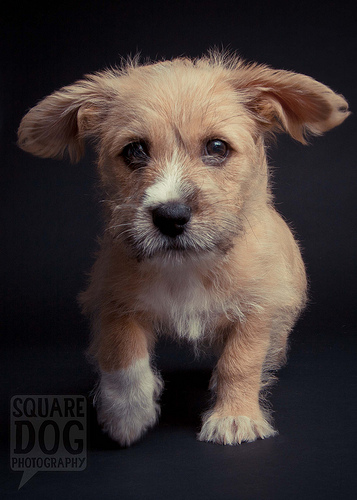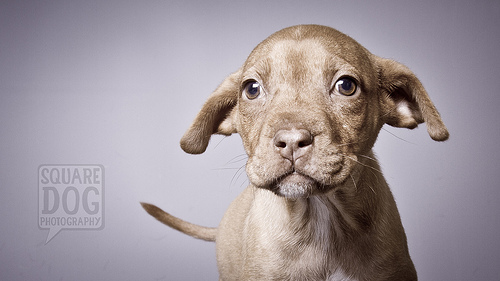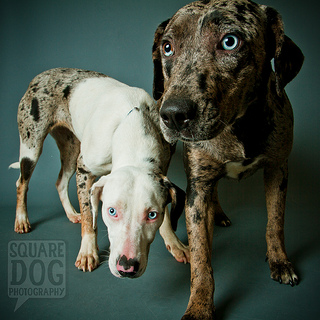
 I shoot dogs. It's what I do. Don't get me wrong, I don't discriminate. I shoot cats too. I work for Lee County Domestic Animal Services in Fort Myers, Fl photographing animals available for adoption. It's extremely rewarding work and I would recommend it to anyone interested in photography. There are plenty of shelters that need help showing their animals in a better light. The trick is getting the attention of a shelter, making damn sure you are dedicated to the idea, and understanding the work involved.
I shoot dogs. It's what I do. Don't get me wrong, I don't discriminate. I shoot cats too. I work for Lee County Domestic Animal Services in Fort Myers, Fl photographing animals available for adoption. It's extremely rewarding work and I would recommend it to anyone interested in photography. There are plenty of shelters that need help showing their animals in a better light. The trick is getting the attention of a shelter, making damn sure you are dedicated to the idea, and understanding the work involved.
When I decided to open Square Dog Photography, I knew I wanted to focus my attention on animals, which I guess is sort of obvious given the name I chose for my business. I've always been a dog person and it just made sense to me. One of the first things I did was contact the shelters in my area to offer my services free of charge. I was surprised that none of them took me up it. Two years passed before a shelter found me and asked if I would like to work with them.
Why?
What I didn't know at the time, and what any photographer who wants to work with a shelter should, is that you need to speak with a director. If you call to offer your services, you're speaking to someone who really doesn't have the power to say yes or no. Anyone with sales experience knows the term "gatekeeper," and basically that's who you are talking to. Shelters are extremely busy places and what I've found is that your message doesn't always get through to the right people. It's best to ask for a manager and make an appointment to speak with them in person.
Keep in mind that you aren't the first person to have asked them. A lot of people see how bad the photos of the animals in the shelter are and think, 'I could do such a better job than that!' So they come in for a day, see how much work the job involves, and never come back. Shelters want and need help, but they are wary of getting burned over and over again. Make sure they know you are serious about helping, and aware of what the job entails.

Animal photography requires patience and a love of animals. Shelter photography requires much more. It's one thing to go to a clients' house, set up shop, and photograph a dog who is loved and comfortable. It's a totally different thing to work with a dog that has never had any training or affection and is in a kennel for the majority of its day. It can take 3 hours to get 20 dogs photographed at the shelter. That's a lot of time when you're only looking for one image to put up on a website.
I've never been bitten by a shelter dog or even been worried that it was about to happen. It can and has happened to other employees but, in my experience, the dogs have all been pretty damned wonderful to work with when you allow them the time to get comfortable.
Here are just a few things to know if you decide to work at a shelter:
 I shoot with a studio backdrop and strobes because I like a clean shot that really shows off the animal. If you want to do the same know this: You can't do it alone. You have to have an assistant. I use a wide angle lens, click like mad and just hope I'll catch a dog looking at the camera. Even that wouldn't work without someone holding the dog's leash to make sure it stays on the backdrop. Finding someone as dedicated to the job as you are is difficult. I am extremely lucky to have found someone. If you're working outdoors, you might be able to work alone. Especially if you have a fast telephoto.
I shoot with a studio backdrop and strobes because I like a clean shot that really shows off the animal. If you want to do the same know this: You can't do it alone. You have to have an assistant. I use a wide angle lens, click like mad and just hope I'll catch a dog looking at the camera. Even that wouldn't work without someone holding the dog's leash to make sure it stays on the backdrop. Finding someone as dedicated to the job as you are is difficult. I am extremely lucky to have found someone. If you're working outdoors, you might be able to work alone. Especially if you have a fast telephoto.
You're going to ruin whatever clothes you wear. Dogs are very happy to be let out of their kennels and want to show you as much. They do that by planting their paws on you, paws with any number of fluids on them.
You'll be peed on. You get used to it but never comfortable with it. I once photographed a shelter dog who urinated on the backdrop, rolled around and then wagged his tail so hard he flicked urine onto my face.. Oh, and my mouth was open... not a fun day at the shelter.
Your equipment will be peed on. Keep your camera in your hands at all time...seriously.
You'll be sat on, drooled on and generally loved on.
Bring something to clean your lens. A dog WILL lick it.

You'll fight the urge to throw your camera when for an entire day, dogs will look at you only when you aren't trying to photograph them. It happens a lot.
You're going to get attached to a lot of animals. People don't do this unless they love animals so it's unavoidable. So far I've wanted to adopt about 30 dogs. I've only adopted one and am personally amazed at my will power.
When the animals you've photographed get adopted it's a great feeling. You'll often hear from people who came in specifically because of your photos. But then there are days when your heart breaks... when an animal you've held and played with is gone because of sickness. You don't get used to that feeling. It always hurts and is a reason some of the photographers I know are not willing to volunteer at a shelter.
If you can handle the smells and fluids and all the rest, the rewards far outweigh the drawbacks. I love what I do. I love shooting dogs.
To see more great photography visit HuffPost Exposure.